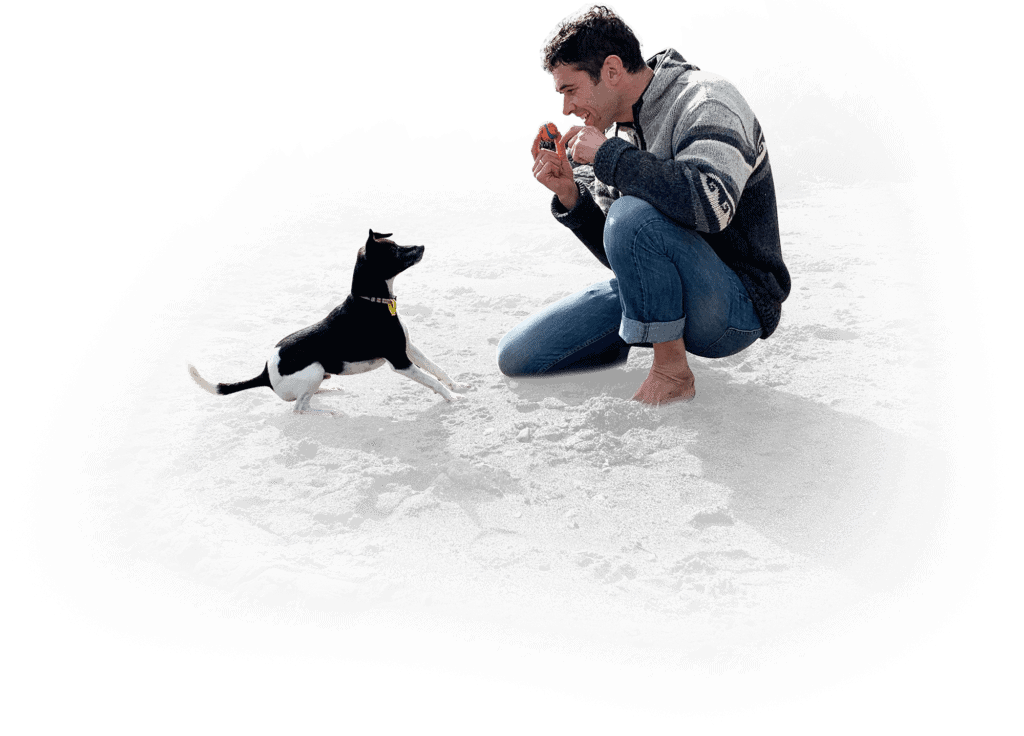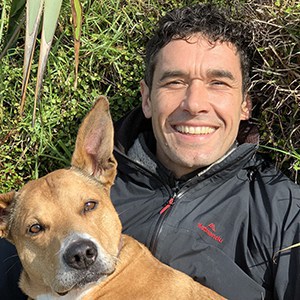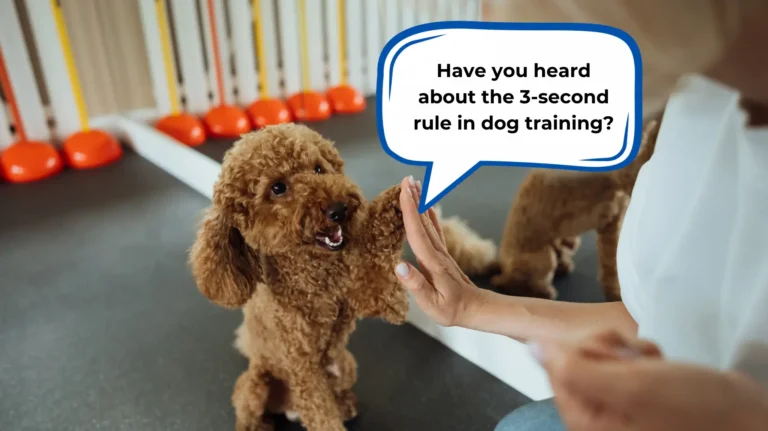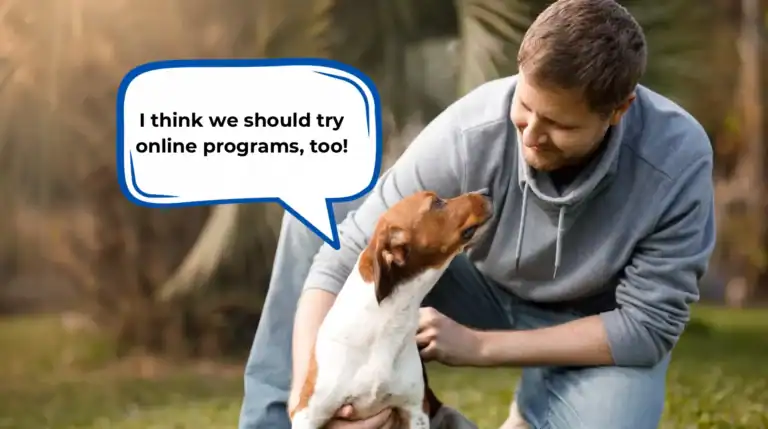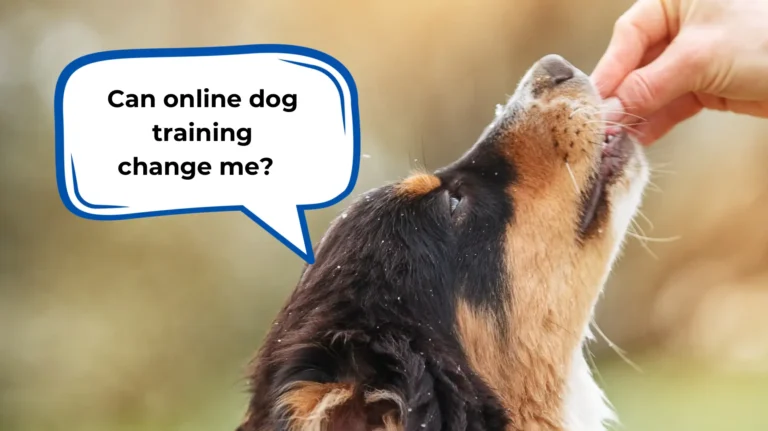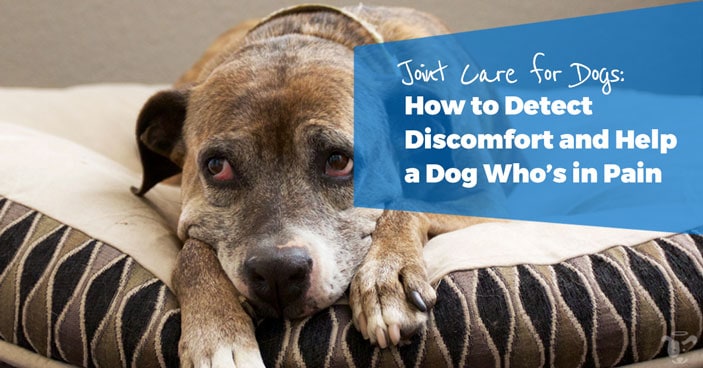
We all know dogs are born to run, but all that activity can wreak havoc on their joints—regardless of age, breed, etc. So today, I want to address the skeleton in the room, so to speak…
…joint issues in dogs.
I like to think that we’re all well-meaning doggy parents…
…but joint problems can be easily missed because dogs can’t always tell us when they’re in pain.
They don’t say things like,
“Hey Mom, or Dad, my hip is hurting.”
Or…
“I’m having trouble getting up the stairs.”
Wouldn’t it be so much easier if they could just talk to us?!
So many joint issues occur later in a dog’s life, so it can be easy to blame a general slowing down to age, rather than to joint pain.
And while all dogs can experience joint pain, certain breeds ARE more susceptible to experiencing joint issues for many reasons.
What to help ensure that your pup is able to run around the dog park without feeling any pain for years to come? Read on to learn all about joint issues and what to look for.
Types of Joint Issues and Their Causes

There are two major categories of joint problems – developmental and degenerative.
Developmental joint problems encompass conditions like hip or elbow dysplasia, meaning that the ball and socket of the joint do not fit, or develop, properly. This causes them to rub and grind against each other rather than sliding smoothly.
If issues like dysplasia are left alone or untreated, the joint can continue to deteriorate…
And your dog could even lose complete movement of that joint.
One thing to note is that genetics play a major role in determining whether a dog will experience dysplasia in his lifetime, and I see it so often in bigger dogs.
Why?
Because larger breeds have excessive growth rate hormones, causing different bones to grow at uneven rates. This can cause the ball and socket to be different sizes, creating the grinding that I described earlier.
Other reasons dogs might experience issues like dysplasia are being overweight or repetitive, high-impact exercise.
Just think about it…if a dog is carrying around extra pounds or continues to stress the joints through exercise everyday, over time those joints will break down.
Degenerative joint problems include conditions like arthritis or other ligament issues.
These are more “wear and tear” type issues that arise as a dog gets older. Basically what happens, just like with humans, is their ligament deteriorates over time.
This deterioration of the joints will certainly cause pain and instability.
Athletic dogs experience these types of issues because they put a lot of stress on their joints every day. Obesity can also play a role, with the extra weight contributing to added stress, causing the joints to break down.
Both types of joint issues can be extremely uncomfortable and even painful for your four-legged friend. And if you have a breed that is predisposed to joint issues, you should be even more vigilant when it comes to spotting joint pain or discomfort.
What Breeds are Susceptible to Joint Issues? 
In general, dogs that are bigger and heavier are always predisposed to joint problems. So, basically, a prime example of a dog that is more susceptible to both developmental and degenerative joint issues is going to be a bigger dog.
Here are the breeds that are most likely to experience joint issues:
- German Shepherd
- Golden Retriever
- Labrador Retriever
- Newfoundlands
- Bernards
- Great Danes
- Dachshunds
- Rottweilers
- Mastiffs
You’ll notice most of the breeds on this list are large dog breeds, with the exception of Dachshunds. That particular breed is more susceptible to joint issues because of their spinal anatomy – basically their back is so long and legs are so short that they’re more inclined to experience difficulties with their joints.
Being overweight is a big precursor to joint issues, so make sure that your dog stays within their healthy weight range. If you want to know what that is, check with your vet. If your dog is overweight, your vet can help you establish a diet and exercise plan that will help shed some extra pounds.
How Can You Tell if Your Dog is Experiencing Joint Issues?

Since your dog can’t talk to you, and it’s not common that they’ll yelp out in pain over joint problems, it can be difficult to notice that there’s anything wrong.
Especially if your dog didn’t suffer a specific injury.
I know you don’t want your dog to be in pain.
So, I’m here to help with some pointers to look out for that might indicate your dog is experiencing joint discomfort or issues.
It all comes down to recognizing what is normal for them.
If you have a very-high-energy dog that begins to have issues with everyday activities like playing fetch, it might signal a joint problem.
Or if your pup used to bound up the stairs or jump into your car with ease and now they’re struggling a bit more, that might be your first sign that your pup’s joints are bothering him .
Maybe they get tired more easily. This is why joint issues are so commonly overlooked.
Because joint pain commonly occurs with age, you might think that the dog is just getting older and is getting tired. But your dog shouldn’t slow down too much as they get older.
If left untreated, your dog may begin to hold up the limb that’s bothering him or you might notice a limp.
Other red flags include swollen joints or excessive licking, so be on the lookout for these signals that might point to joint problems.
Joint issues progress extremely slowly, so it will be a gradual progression that begins with your dog slowing down or having difficulty doing activities she used to do with ease.
Now that you know what to look for, how can you help your dog?
How Do You Help Your Dog’s Joint Issues?
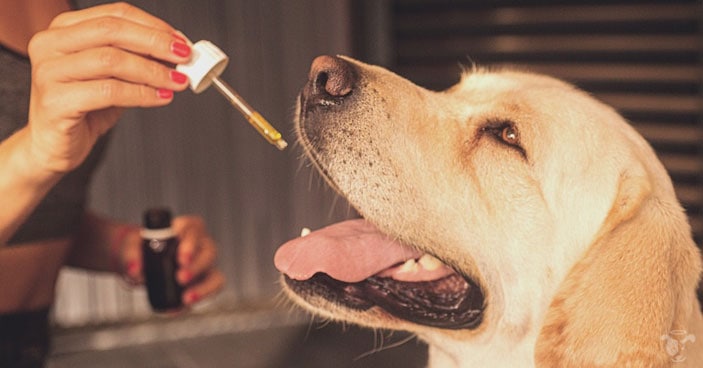
No dog should suffer from chronic pain, so, luckily, there are a few options to explore if your pup suffers from joint issues.
Prescription pain medication can ease your dog’s pain, but they are not necessarily a long-term solution. Consult with your vet before using any medications.
Supplements are becoming a popular alternative to pain medication…
You can try supplements like glucosamine hydrochloride, chondroitin, or omega-3 fatty acids from fish oil to help relieve some of that joint pain your dog is experiencing.
Not all brands are created equal, so check with your vet for a recommendation.
A vet experienced in canine rehabilitation can recommend treatments and exercises that can help your dog experience less pain while also building strength. Treatment methods can include hydrotherapy, acupuncture, and massage to help alleviate the joint pain while helping your dog build muscle around those joints, which in turn helps support and strengthen the joint.
Last, but not least, there is one product that I recommend over and over again for dogs who suffer from joint pain…
And that’s my Doggy Dan’s ‘Angel Oil’ CBD dog treats.
CBD supplements come with a whole lot of information around their anti-inflammatory properties. So whether your pup is experiencing developmental joint issues like dysplasia or degenerative ones like arthritis, the anti-inflammatory qualities of CBD oil are what's needed.
Another benefit of CBD oil products like Doggy Dan’s ‘Angel Oil’ is that it works with the receptors in your canine’s brain that deal with pain. When it comes to dogs and CBD, it's all about how this magical cannabinoid teams up with their endocannabinoid system (ECS). Believe it or not, your dog has an ECS, just like you do. Yep, all animals have one, and it works kinda like ours.
Your dog's ECS is like the superhero responsible for mood, memory, muscle movement, digestion, appetite, and balance. When the ECS is in harmony, your dog shines in all these areas. But when it's off-kilter, their well-being can take a hit. Since CBD is a great sidekick for the ECS, giving your pup a dose of doggy CBD treats or tinctures might help them find their balance and feel awesome overall.
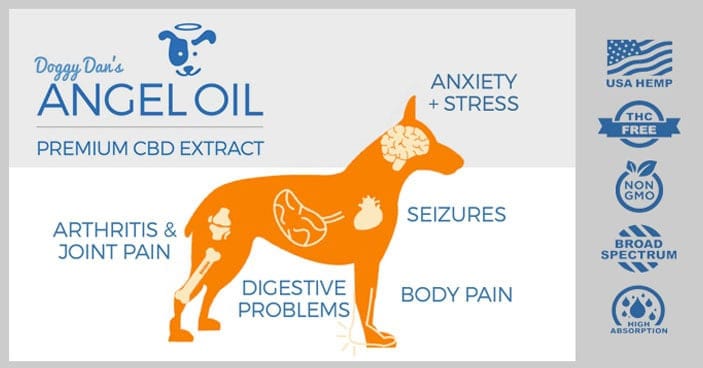
And the best part is that, because it’s my product, I can assure you that it’s the highest-quality CBD product made from the purest ingredients.
**One thing I want to note is that there is ZERO THC in CBD oil supplements, so you can rest assured that your dog will not experience a “high” when he or she ingests the products.**
And it’s so easy! Simply give your pup 1-2 treats (per 25 lbs or 11.3 kgs) each day.
Soon enough, you’ll see your dog wanting to jump up in your car again!
You’ll see them run free at the dog park!
And you’ll see those big panting smiles on their faces.
All because their joint pain is gone.
Learn more about Doggy Dan’s ‘Angel Oil’ Dog Treats right now.
Here’s to a pain-free future for your pup!
Cheers,
~ Doggy Dan

